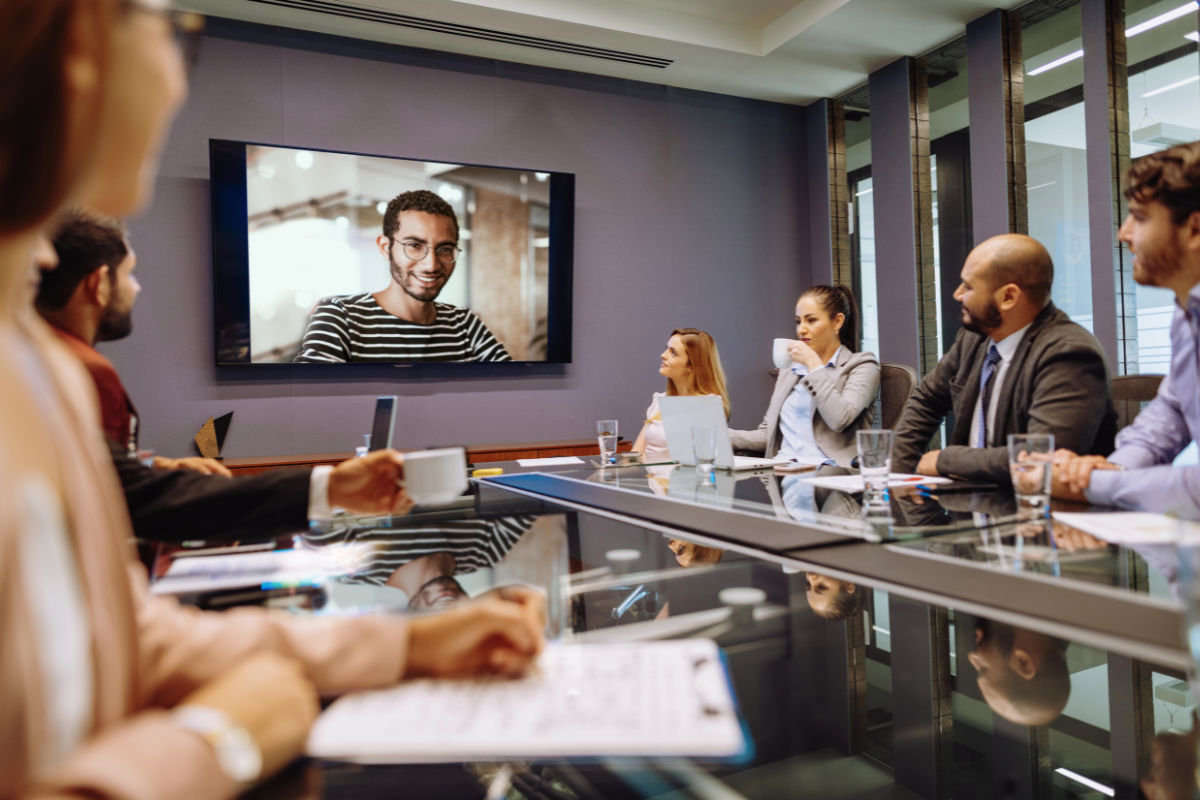In today’s interconnected world, video conferencing for education has transcended being merely a technological trend; it is actively bridging educational gaps across borders.
As the landscape of global education evolves, the integration of video conferencing tools for learning presents a promising solution.
It enhances access, collaboration, and cultural exchange among students worldwide.
Breaking Down Geographical Barriers
Video conferencing technology is breaking down geographical barriers. With a stable internet connection, students from different corners of the world can engage in real-time virtual classrooms.
This enables them to access high-quality educational resources and interact with expert educators without the need for physical relocation.
The evolution of video conferencing has transformed education from a localized experience to a global endeavor, where geographic distance no longer limits access to knowledge and expertise.

Enhancing Cross-Cultural Collaboration
One of the significant advantages of video conferencing for education is its ability to facilitate cross-cultural collaboration. Through virtual classrooms, students can connect with peers from diverse backgrounds.
They can share ideas, perspectives, and experiences, thereby broadening their worldview. Moreover, it cultivates essential skills such as communication, empathy, and cultural sensitivity.
By fostering interactions among students from different cultural backgrounds, video conferencing promotes a deeper understanding and appreciation of diversity, preparing students for success in an increasingly globalized world.
Enhancing Resource Accessibility
Video conferencing opens doors to a wealth of educational resources that might otherwise be inaccessible.
Expert guest speakers, renowned educators, and industry professionals can now virtually visit classrooms, providing students with insights and knowledge beyond the confines of their local curriculum.
This access to a diverse range of perspectives and expertise enriches the learning experience, equipping students with the skills and knowledge needed to tackle complex challenges in their respective fields.
Additionally, video conferencing allows students to access educational opportunities that may not be available locally, leveling the playing field and promoting equity in education.
Adapting to Changing Educational Landscapes
In modern educational landscapes, flexibility is key. Video conferencing accommodates this need by offering a versatile platform for learning.
It facilitates synchronous learning, asynchronous discussions, and blended approaches. Educators can tailor their methods to suit the needs of a diverse student body, ensuring inclusivity and effective learning outcomes.
Furthermore, video conferencing enables personalized learning experiences, allowing students to learn at their own pace and in their preferred environment.
This flexibility promotes student engagement and motivation, leading to improved learning outcomes and academic success.
Video conferencing for education serves as a bridge that spans across borders, connecting learners and educators globally.
It offers inclusive, collaborative, and culturally rich learning environments. Embracing this technology unlocks the full potential of education for students everywhere, enabling them to learn regardless of their geographical location or socio-economic background.
As we continue to embrace digital transformation in education, video conferencing stands out as a powerful tool for fostering knowledge exchange, cultural understanding, and academic growth on a global scale.
By harnessing the power of video conferencing, we can create a more interconnected and equitable world, where access to quality education knows no boundaries.

Other Uses Of Technology In The Classroom
Beyond video conferencing, technology offers a myriad of other applications in education, revolutionizing traditional teaching methods and enhancing the learning experience for students.
Here are some key areas where technology is making a significant impact:
Personalized Learning
Technology enables educators to tailor instruction to individual student needs through adaptive learning platforms and educational software.
These tools use algorithms to analyze student performance and provide customized learning paths, ensuring that each student receives the support and resources they need to succeed.
Interactive Learning Tools
Interactive whiteboards, educational apps, and multimedia resources engage students in active learning experiences.
These tools make learning more dynamic and hands-on, allowing students to interact with content in meaningful ways and gain a deeper understanding of complex concepts.
Gamification
Gamified learning platforms leverage game elements such as points, badges, and leaderboards to motivate students and make learning more engaging.
By incorporating elements of competition and reward, gamification encourages active participation and fosters a sense of achievement among students.
Online Learning Platforms
Online learning platforms offer flexible and accessible learning opportunities for students of all ages.
From Massive Open Online Courses (MOOCs) to specialized training programs, these platforms provide access to high-quality educational content from leading institutions and experts around the world.
Collaboration Tools
Collaboration tools such as cloud-based document sharing platforms, online discussion forums, and collaborative project management tools facilitate teamwork and communication among students.
These tools promote collaborative learning environments where students can work together to solve problems, share ideas, and learn from each other’s perspectives.
In summary, technology offers a wealth of opportunities to enhance teaching and learning in education.
By leveraging these tools and resources effectively, educators can create engaging, personalized learning experiences that empower students to succeed in the digital age.